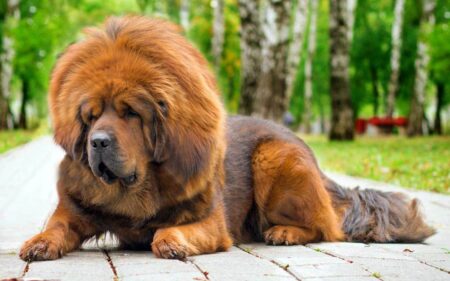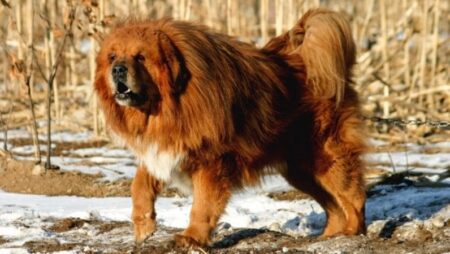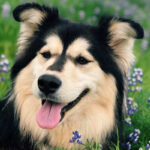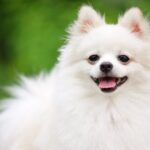Tibetan Mastiffs are large, majestic dogs known for their dense, fluffy coats and fierce, protective nature. With a history dating back over 5,000 years, they are one of the oldest and most revered breeds in the world. But what sets them apart from other breeds is their staggering price tag. Tibetan Mastiffs are often cited as the most expensive dogs in the world. In this article, we will explore the history, characteristics, and reasons behind the extraordinary cost of the Tibetan Mastiff, as well as the controversies surrounding their breeding and ownership.
Tibetan Mastiff: World Most Expensive Dog
The Tibetan Mastiff is a large and powerful breed known for their protective and loyal nature. They originated in Tibet and were originally used as guard dogs for herds, monasteries, and homes. They have a thick double coat, which makes them well-suited for cold climates. This ancient breed is highly prized in their native country and is known to have a strong and independent personality.
Height:
On average, Tibetan Mastiffs stand 25-28 inches (63-71 cm) at the shoulder for males and 24-26 inches (61-66 cm) for females.
Weight:
The average weight of a male Tibetan Mastiff is 100-160 pounds (45-73 kg) and for females it is 75-125 pounds (34-57 kg).
Lifespan:
Tibetan Mastiffs have a relatively long lifespan for a large breed, living on average 10-14 years.
Colors:
The Tibetan Mastiff comes in a variety of colors, including black, brown, golden, gray, and red. Some may have white markings or a golden mask.
Temperament:
Tibetan Mastiffs are known for their fierce loyalty and will fiercely protect their family and territory. They can be wary of strangers and may be reserved with people they don’t know. They are also independent and can be stubborn, so early and consistent training is important. They are not recommended for first-time dog owners.
Grooming:
The Tibetan Mastiff’s thick double coat requires regular brushing to prevent matting and to keep it healthy. They also shed seasonally and will need more frequent brushing during this time. Their coat does not have a strong odor and only need occasional bathing.
Exercise:
Tibetan Mastiffs are a large and athletic breed and require daily exercise to stay healthy and happy. This can be in the form of walks, hikes, or playtime in a fenced yard. They should not be left alone for long periods as they can become destructive and develop behavioral issues.
Training:
Tibetan Mastiffs are intelligent and can be trained, but it’s important to start training at a young age and to be consistent and patient. They respond well to positive reinforcement methods but may become bored with repetitive training sessions. Socialization is also important for this breed to help them become well-adjusted and comfortable around other people and animals.
Why is a Tibetan Mastiff so Expensive?
The Tibetan Mastiff is one of the most expensive dog breeds in the world, with some puppies costing up to $5,000. Several factors contribute to the high cost of this breed. First, Tibetan Mastiffs are relatively rare, especially outside of their native Tibet. Second, they require a lot of space and exercise, making them more suitable for rural areas or large properties. Finally, Tibetan Mastiffs have been bred for centuries to be guard dogs, and they have the size and strength to back it up. All of these factors contribute to the high price tag of the Tibetan Mastiff.
Are Tibetan Mastiffs Friendly?
While the Tibetan Mastiff has a reputation for being fierce and protective, they can be very friendly and affectionate with their family. They are loyal and devoted to their owners, and they often form strong bonds with the people they live with. However, Tibetan Mastiffs are not typically friendly with strangers. They are very territorial and may act aggressively towards people they don’t know. This is why they require extensive socialization from a young age. With the right training and socialization, a Tibetan Mastiff can be a wonderful family pet. Just be prepared for them to be suspicious of strangers!
Are Tibetan Mastiffs Good with Kids?
Yes, Tibetan Mastiffs can make great family dogs, including being good with kids. With proper socialization and training, Tibetan Mastiffs are known to be patient and gentle with children. However, it’s important to remember that these are large, powerful dogs, so it’s important to supervise any interactions between children and Tibetan Mastiffs. In addition, children should be taught how to interact with dogs safely and respectfully. Overall, Tibetan Mastiffs can make great family pets, as long as the proper precautions are taken. With proper care and supervision, they can be wonderful companions for kids of all ages.
History of Tibetan Mastiff
The Tibetan Mastiff breed is thought to have originated in ancient Tibet, where they were highly valued as guard dogs for monasteries and nomadic tribes. The exact origins of the breed are unclear, as records of the breed in Tibet were scarce due to the isolated and remote nature of the region.
However, it is believed that the breed developed from the ancient Asian Tibetan Dog, which was a large, powerful breed used for hunting and guarding. These dogs were bred with other large Asian mastiff-type dogs to create the Tibetan Mastiff we know today.
Tibetan Mastiffs were originally bred for their fierce loyalty and protective nature, making them highly sought after as guard dogs for livestock and property. They were also used as guard dogs for Tibetan monasteries, where they were trained to protect the monks and their valuable possessions.
In the mid-19th century, Tibetan Mastiffs were brought to England by British soldiers returning from their travels in Asia. They quickly gained popularity among dog enthusiasts and were showcased at dog shows and exhibitions, further increasing their popularity.
In the early 20th century, Tibetan Mastiffs were imported to the United States and other parts of Europe, where they were also well-received by the public. However, during this time, the breed almost died out in their native Tibet due to a decrease in demand for guard dogs and the changing political landscape.
Fortunately, in the 1950s, a Tibetan Mastiff breed club was formed in England, and efforts were made to preserve the breed by importing dogs from Tibet and breeding them with existing bloodlines. This helped to revitalize the breed and ensure its survival.
Today, Tibetan Mastiffs are still highly regarded as guard dogs and are also popular as family pets. Their fierce loyalty and protective instincts make them excellent guard dogs, but they also make loving and devoted companions.
How Strong is a Tibetan Mastiff?
The Tibetan Mastiff is an incredibly strong and powerful dog. This breed is known for being one of the strongest in the world, and they have been used as guard dogs and working dogs for centuries. The Tibetan Mastiff has a thick, muscular build, and they are incredibly strong for their size. They have a bite force of up to 550 pounds per square inch, which is among the highest of any dog breed. Additionally, they are known for being strong pullers, making them excellent for sledding and other working activities. The strength of the Tibetan Mastiff is one of its most notable characteristics.
Where are Mastiffs Banned and Why?
There are a few places in the world where Mastiffs are banned, and there are a variety of reasons for this. In some places, such as the UK, Mastiffs are banned because they are considered a dangerous breed. They are powerful dogs with a strong bite force, and there have been several incidents involving them. In other places, such as Singapore, Mastiffs are banned because they are considered a “non-traditional” breed and are not native to the region. In some cases, Mastiffs are banned because they are difficult to control, and they can be dangerous if not properly trained.
Characteristics of Tibetan Mastiff
- Large size: Tibetan Mastiffs are known for their impressive size, with males standing at 26-29 inches and weighing between 90-150 pounds, and females standing at 24-28 inches and weighing between 70-120 pounds.
- Thick coat: They have a thick double coat that is weather-resistant, with a coarse outer coat and a soft inner coat. The coat can be any color, including black, brown, gray, or golden, and may have various markings.
- Muscular build: Tibetan Mastiffs have a strong and muscular build, with a deep chest and broad shoulders. They have a powerful neck and sturdy legs that allow them to move with grace and agility.
- Large head: The Tibetan Mastiff has a large head in proportion to its body, with a broad skull, strong and square muzzle, and a well-developed stop. They have a black nose and dark, almond-shaped eyes that give them an intense and alert expression.
- Strong jaws: The Tibetan Mastiff has a strong jaw and a powerful bite force, making them excellent guard dogs. Their teeth are large and strong, with a scissor-like bite.
- Dense and thick tail: Their tail is set high and carried over the back in a sickle or curled shape. The tufted tail is covered with dense and thick hair, providing insulation and protection when the dog curls up to sleep.
- Strong and well-balanced temperament: Tibetan Mastiffs are known for their strong and independent nature. While they are loyal and protective of their families, they can also be stubborn and have a strong will. They require a confident and consistent owner who can establish themselves as the pack leader.
- Protective instincts: The Tibetan Mastiff was originally bred to protect livestock and property from predators. As such, they have strong protective instincts and are wary of strangers. Early socialization and training are crucial to ensure they are well-behaved and friendly with all individuals.
- Moderate energy levels: Despite their large size, Tibetan Mastiffs do not need a lot of exercise and can adapt well to apartment living as long as they get daily walks and playtime. They are not overly active but do require mental stimulation to prevent boredom and destructive behavior.
- Long lifespan: Tibetan Mastiffs have a relatively long lifespan for their size, living between 12-15 years on average. However, as with all purebred dogs, they may be prone to certain health issues, including hip and elbow dysplasia, hypothyroidism, and eye problems. Proper care and regular vet check-ups can help prevent and manage these issues.
Appearance of Tibetan Mastiff
The Tibetan Mastiff is a large, powerful, and majestic breed. They have a sturdy, muscular build with a deep chest and strong, wide legs. Their head is large and square-shaped, with a broad muzzle and a pronounced stop (a dip between the forehead and the nose). Their eyes are small and almond-shaped, and their ears are medium-sized and triangular, hanging close to the head. They have a thick coat that comes in a variety of colors, including black, brown, gray, and red. Their tail is long and feathered, and it may curl over the back when the dog is relaxed. Overall, Tibetan Mastiffs have a regal appearance and a noble bearing.
Temperament of Tibetan Mastiff
Tibetan Mastiffs are known for their loyalty, independence, and protective nature. They were originally bred to guard flocks and homes, and this instinct is still strong in the breed today. They are intelligent and confident, but they can also be stubborn and headstrong. Early and consistent training is important to establish leadership and prevent behavior problems from developing. Tibetan Mastiffs are generally calm and relaxed, but they can become aggressive if they feel their territory or family is threatened. They are also known to be gentle and patient with children, making them great family pets. However, due to their size and protective instincts, they may not be suitable for homes with young or inexperienced children. Proper socialization is also important for Tibetan Mastiffs to prevent them from becoming overly wary or aggressive towards strangers.
Most Expensive Dog in the World
- Tibetan Mastiff – This luxurious breed can cost up to $1 million and holds the record for the most expensive dog sold.
- Samoyed – Known for its fluffy white coat and friendly personality, the Samoyed can cost up to $14,000.
- Cavalier King Charles Spaniel – This elegant and affectionate breed can cost up to $14,000, making it one of the most valuable dog breeds.
- Chow Chow – Known for its lion-like appearance and independent nature, a Chow Chow can cost up to $8,500.
- Rottweiler – This strong and confident breed can cost up to $7,000, making it one of the most expensive guard dogs.
- Pharaoh Hound – This ancient breed from Malta can cost up to $6,500 and is known for its graceful and athletic build.
- Akita – This loyal and powerful breed can cost up to $4,500 and is highly valued in Japan.
- Irish Wolfhound – Known for its massive size and gentle nature, an Irish Wolfhound can cost up to $3,500.
- Azawakh – This rare and elegant breed from West Africa can cost up to $3,000.
- Afghan Hound – With its stunning long coat and elegant appearance, an Afghan Hound can cost up to $3,000.
Cost of Tibetan Mastiff
The cost of a Tibetan Mastiff can vary greatly depending on various factors such as breeder reputation, location, and pedigree. On average, a Tibetan Mastiff can cost anywhere from $2,000 to $6,000, but some breeders may charge significantly up to $12,000 for top-quality puppies with champion bloodlines. Additionally, the cost of ownership for a Tibetan Mastiff can also be high due to their large size and specific health and grooming needs. It is important to thoroughly research and budget for the cost of owning a Tibetan Mastiff before committing to purchasing one.
SEE ALSO: Golden Retriever Husky Mix
Health Conditions of Tibetan Mastiff
Some potential health conditions of Tibetan Mastiffs include:
- Hip Dysplasia: This is a common orthopedic condition that affects large breeds like the Tibetan Mastiff. It occurs when the hip joint does not fit together properly, leading to pain and discomfort. This condition can be managed with medication, physical therapy, and in some cases, surgery.
- Elbow Dysplasia: Similar to hip dysplasia, elbow dysplasia is a condition that affects the elbow joint and can cause lameness and pain. It is also common in large breeds like the Tibetan Mastiff and can be managed with medication and surgery in severe cases.
- Entropion: This is an eye condition where the eyelids roll inward, causing the eyelashes to rub against the eye surface. This can lead to irritation, discharge, and even damage to the cornea. Entropion can be corrected with surgery.
- Hypothyroidism: This is a condition where the thyroid gland does not produce enough hormones, leading to weight gain, lethargy, and skin problems. It can be managed with medication and a specialized diet.
- Progressive Retinal Atrophy (PRA): PRA is a hereditary eye disease that causes progressive vision loss and eventually blindness. There is no cure for PRA, but the progression of the disease can be slowed down through medication and specialized diets.
- Canine Inherited Demyelinative Neuropathy (CIDN): This is a genetic disorder that affects the nervous system and can cause weakness and loss of coordination, especially in the hind legs. There is no cure for CIDN, but supportive care can help manage the symptoms.
How to Care for a Tibetan Mastiff
- Provide a proper diet: Tibetan Mastiffs are large dogs and require a nutritious diet to keep them strong and healthy. Consult with your veterinarian to determine the best diet for your specific dog, taking into account their age, activity level, and any dietary restrictions.
- Groom regularly: Tibetan Mastiffs have a long, thick coat that sheds heavily twice a year. To keep their coat healthy and free of mats, brush them regularly, at least once a week. During shedding season, daily brushing may be necessary. They also require occasional baths to keep their coat clean and shiny.
- Exercise regularly: Tibetan Mastiffs are active dogs and require regular exercise to keep them healthy and well-behaved. Aim for at least 30 minutes of physical activity per day, such as walks, runs, or playtime in a fenced-in yard. Be sure to avoid exercising in extreme heat or cold, as they are sensitive to temperature changes.
- Socialize early and often: Tibetan Mastiffs can be wary of strangers and other animals, so early socialization is crucial. Introduce them to a wide variety of people, animals, and situations from a young age to help them develop into well-adjusted adults.
- Train with positive reinforcement: Tibetan Mastiffs are intelligent and independent dogs, but they can also be stubborn. Use positive reinforcement techniques, such as treats and praise, to train them and reinforce good behavior. Be patient and consistent with your training, as these dogs may take longer to learn new commands compared to other breeds.
- Provide mental stimulation: In addition to physical exercise, Tibetan Mastiffs also require mental stimulation to prevent boredom and destructive behaviors. Provide them with plenty of chew toys, puzzles, and other interactive activities to keep them mentally engaged.
- Monitor health: As with any dog, it is important to monitor your Tibetan Mastiff’s health and seek veterinary care when needed. Keep up with regular vaccinations, flea and tick prevention, and routine check-ups to ensure your dog stays healthy and happy.
- Provide a comfortable living space: Tibetan Mastiffs can adapt to various living environments, as long as they have space to move around and exercise. If you have a smaller living space, be sure to provide them with opportunities to run and play, such as regular walks and visits to a dog park. And don’t forget a comfortable bed for them to rest and sleep in.
FAQs
Q. What is the top 1 most expensive dog in the world?
A. The top 1 most expensive dog in the world is the Tibetan Mastiff. This large, powerful breed can cost upwards of $2 million. Tibetan Mastiffs are highly sought after for their beauty, strength, and rarity.
Q. What dog was sold for 2 million dollars?
A. The dog that was sold for 2 million dollars was a Tibetan Mastiff named Big Splash. This particular dog was sold in 2014 at a luxury pet fair in China.
Q. Who paid 1.5 million for a Tibetan Mastiff?
A. The person who paid 1.5 million dollars for a Tibetan Mastiff was a Chinese business tycoon named Lu Liang. Lu Liang is a successful entrepreneur who owns several businesses in China, including a real estate company.
Q. What kind of dog is worth 10000?
A. There are a few different types of dogs that can be worth up to $10,000. Some of the most expensive breeds include the Samoyed, the Cavalier King Charles Spaniel, and the English Bulldog.
SEE ALSO: German Shepherd Husky Mix
Conclusion
In conclusion, the Tibetan Mastiff is truly a remarkable breed with a breathtaking appearance, a fiercely protective nature, and a rich history. Its rarity and exclusivity have contributed to its title as the world’s most expensive dog. However, owning a Tibetan Mastiff comes with great responsibility and is not suitable for everyone. It requires a dedicated owner who is willing to invest time, effort, and money into properly caring for this majestic breed. If you are considering adding a Tibetan Mastiff to your family, make sure to do thorough research and choose a reputable breeder to ensure a healthy and well-socialized dog.


